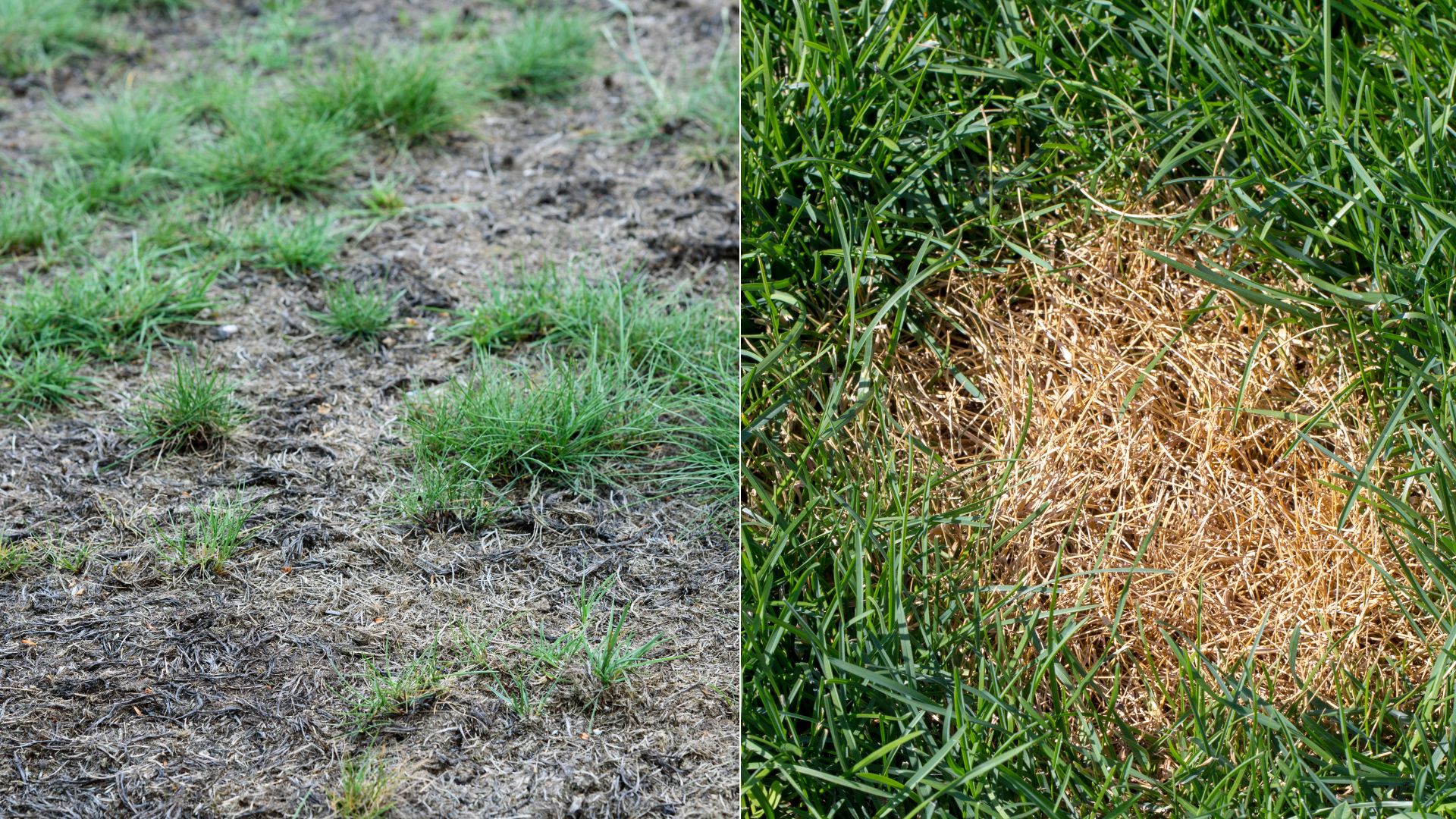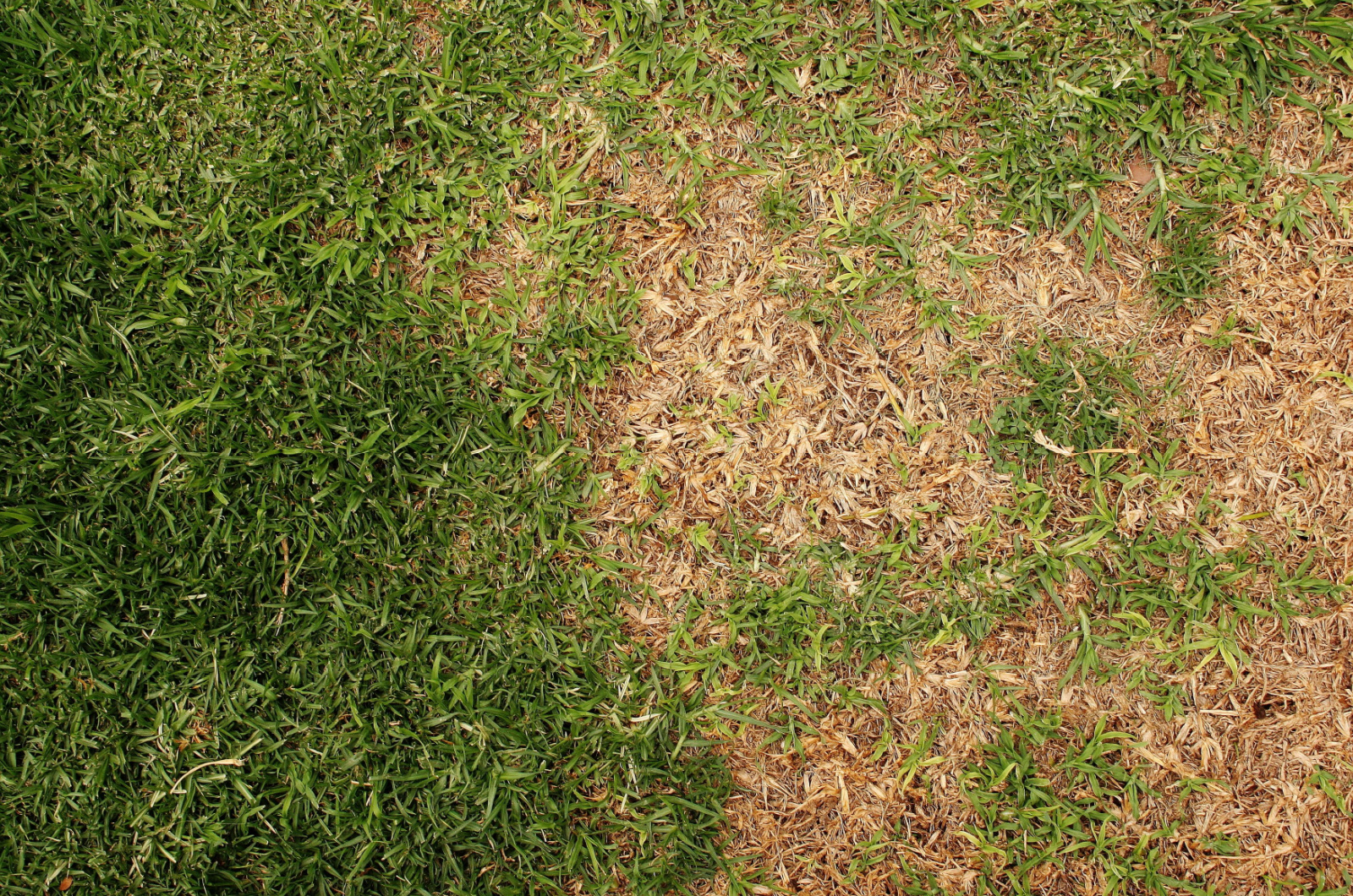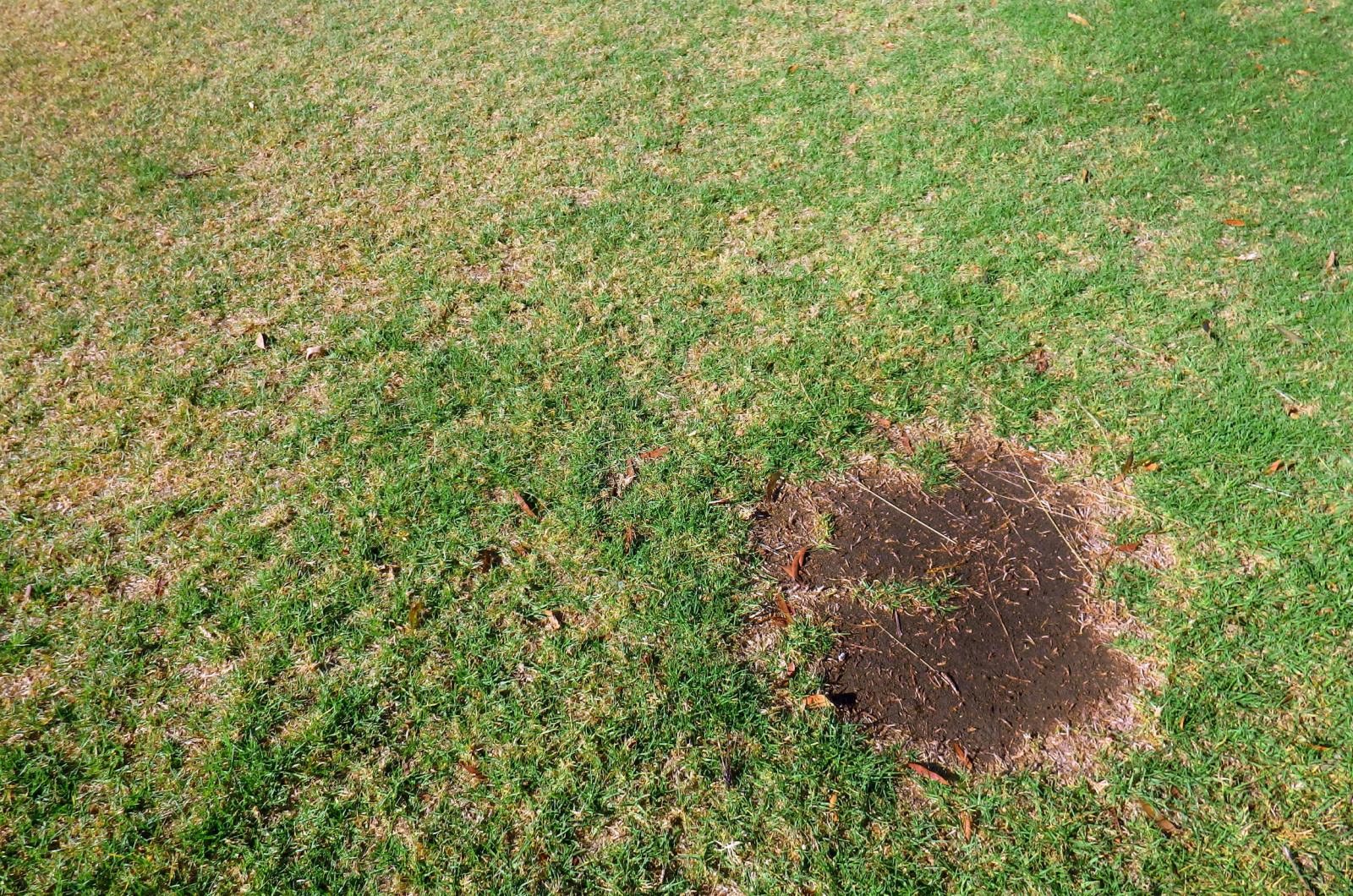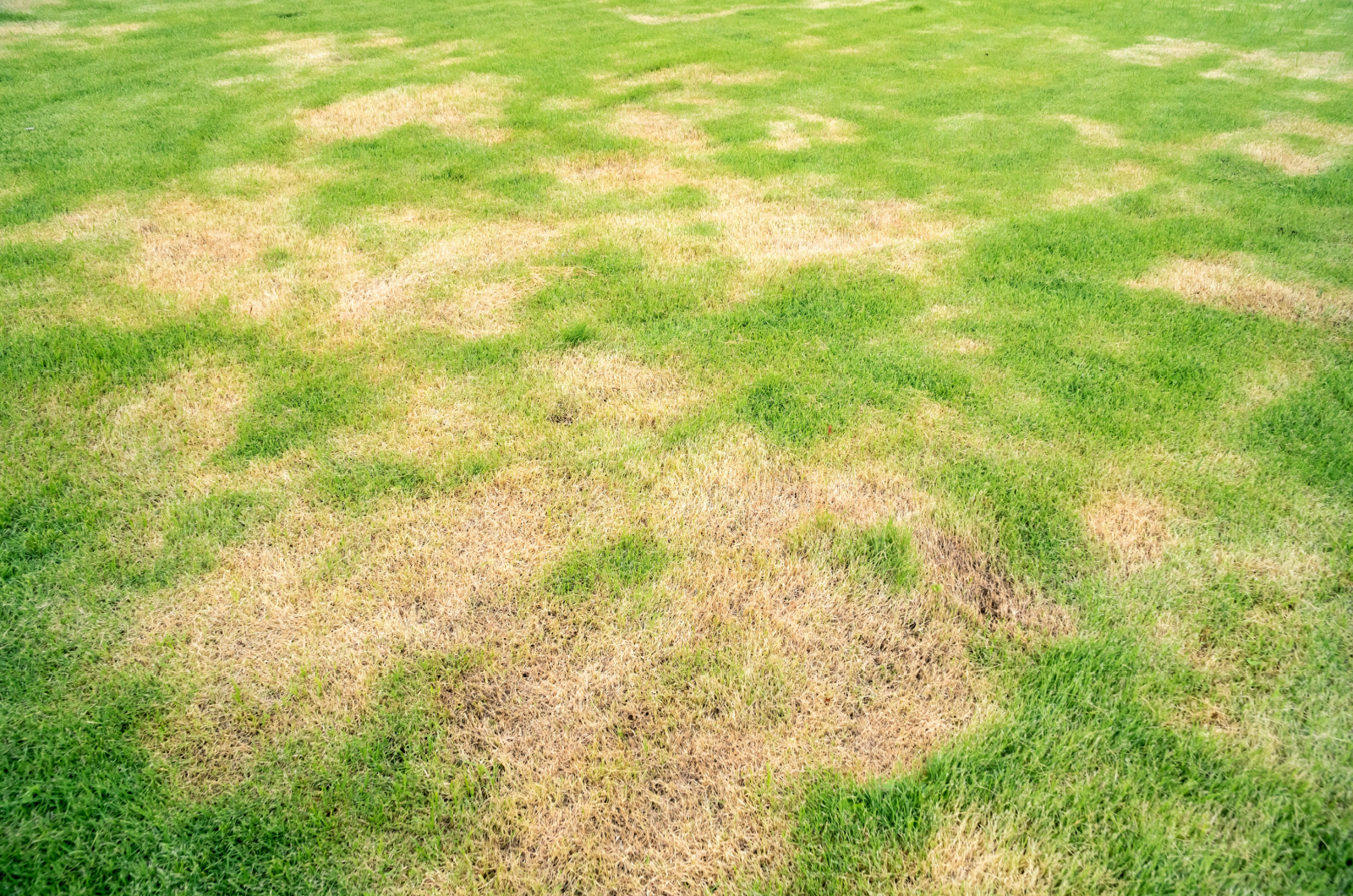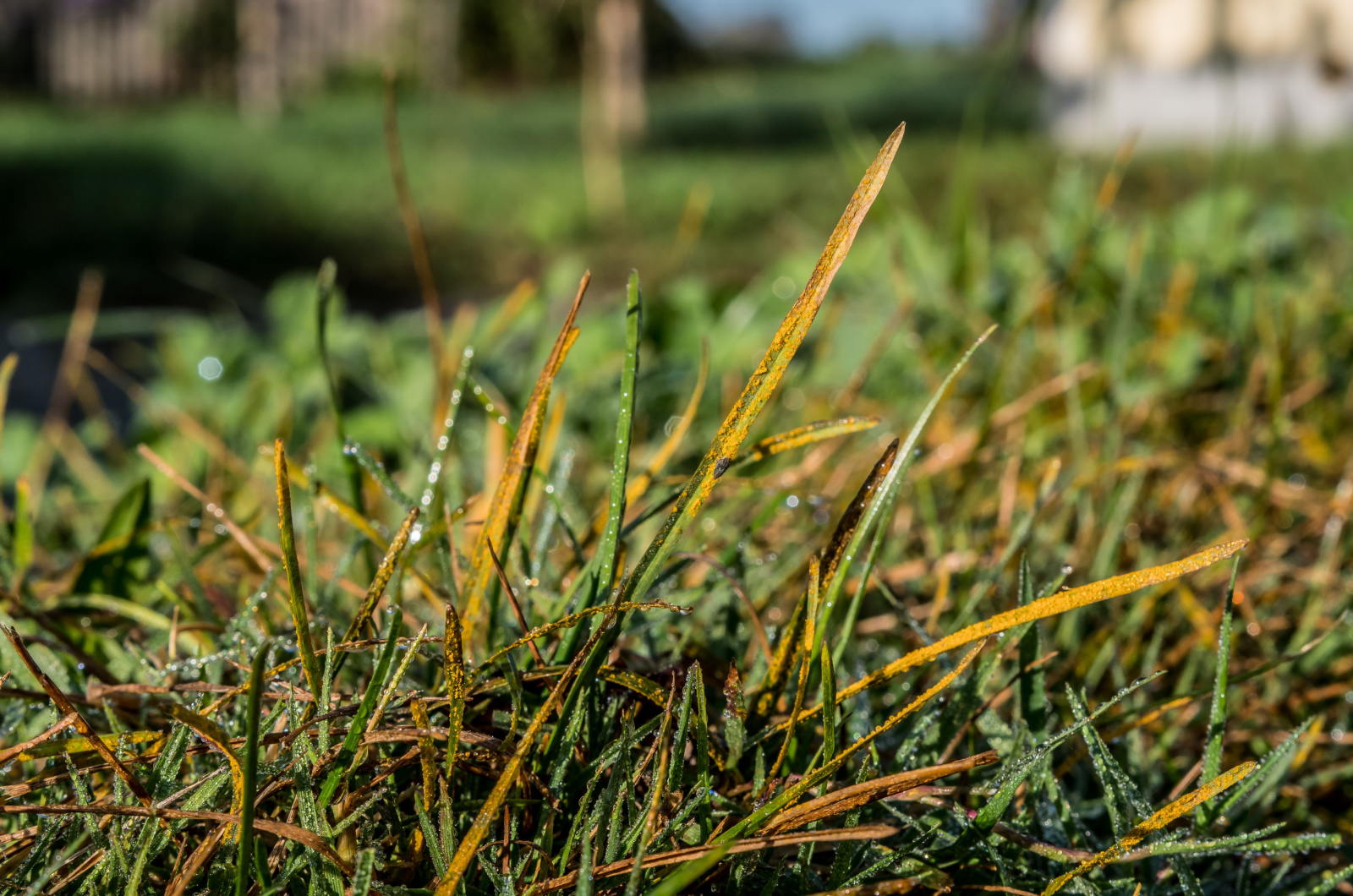No matter how much time you spend caring for your lawn, issues can occur. You may be surprised to hear that it’s not uncommon for lawns to suffer from diseases.
But the essential thing is to recognize the disease in time and start with the treatment immediately. The great news is that not all diseases are dangerous and have fatal consequences.
I’ll show you the 8 most common lawn diseases, the signs, and how to fix them. You’ll also see what typically leads to these problems so that you can prevent them in the first place.
Let’s get started!
1. Summer Patch
The lawn is supposed to look its best in the summer. But if you live in the northern regions of the U.S., you should be careful about summer patch disease (1).
It’s caused by Magnaporthe poa, which is a fungus that mainly attacks roots. This disease also goes under the name Poa Patch.
The disease is more common in cool-season grasses, such as Kentucky bluegrass and fine fescues, and it occurs in humid and hot conditions. When these conditions are combined with poor-draining soil, the Summer Patch disease is almost inevitable.
Signs
The first thing you’ll notice if your lawn suffers from this disease is small patches typically in a circular shape. As the disease progresses, the patches can spread up to 18 inches in diameter.
The infected parts of your lawn will display wilting and the patches will turn reddish- or light brown. Some healthy turf will remain in the center of the patches.
Treatment And Prevention
If your lawn displays the signs above the first step is to enhance root growth by employing the aeration technique. Your mowing height should be raised to about 3 inches.
After you aerate your lawn, the final step is to overseed it but this time you should use genetically resistant varieties, such as perennial ryegrass. Alternatively, you can start a new lawn by planting a tall fescue.
If the patches take over your lawn, I recommend fungicide treatment.
2. Snow Molds
This is actually a group of diseases with Pink snow mold or Grey snow mold as the most common (2). These diseases are, as you can assume, common in snowy regions.
Your lawn becomes susceptible to diseases once the snow starts to melt.
Signs
In the case of Pink snow mold, you’ll notice circular spots that are approximately 3 inches in diameter. These spots quickly turn yellow, reddish-brown, or orange-brown, and mold growth is clearly visible.
If left untreated, the spots will become light gray and about 8 inches in diameter. When exposed to light, the spots look pink, hence the name.
Grey snow mold is characterized by round, larger grayish-white spots. The mold can become completely black as the disease develops further.
Treatment And Prevention
Luckily, the disease doesn’t require chemical treatment in most cases. Prevention is the key; avoid fertilizing at the end of the fall and keep your lawn mowed.
You should carefully remove and get rid of the fuzzy-looking mycelia by raking.
3. Necrotic Ring Spot
If you live in the northern U.S. and have Kentucky bluegrass planted on your lawn, you should be careful about Necrotic ring spot disease (3). We’ve seen that this type of grass is resistant to summer patches but, unfortunately, it’s not the case for Necrotic ring spot.
The favorable conditions for this disease include cool and wet weather followed by drought and heat stress.
Adding too much fertilizer and water also makes your lawn more susceptible, as well as too thick a layer of thatch.
Signs
The patches that occur as a result of the infection are typically straw-colored or pale green and they won’t get larger than 12 inches in diameter.
You may notice new growth in the patch’s center and it’ll look like a frog’s eye. This is the main reason why the disease got the nickname Frog Eye.
Treatment And Prevention
The first thing you need to do if your lawn suffers from Necrotic ring spot disease is reduce nitrogen fertilizer.
Then, aerate and dethatch your lawn to make the soil less compact. The easiest way to avoid Frog Eye is by planting resistant varieties.
4. Red Thread
Red thread (4) is a disease that doesn’t really have preferences regarding grass types and can occur in any part of the U.S. It predominantly affects lawns in shade that stay wet for too long.
There are three main things that significantly increase lawn susceptibility to Red thread: nutrient deficiency, overwatering, and poor drainage.
Signs
The tell-tale signs of Red thread disease are water-soaked areas and dieback of the leaf tips.
Red, thread-like filaments occur and that’s how the disease actually got the name.
The patches typically come in beige; they’re irregular and their size may vary from a few inches to a few feet in diameter.
Treatment And Prevention
You’ll first need to remove the clippings and then apply a fertilizer with higher concentrations of nitrogen, paying attention to the dosage.
The disease typically disappears in a few weeks but if you don’t notice any signs of improvement, fungicide treatment may be required.
5. Brown Patch
Here’s another disease that isn’t really picky when it comes to grass types. However, perennial ryegrass and tall fescue are the most sensitive. Brown Patch disease (5) is found all across the U.S. and it often goes under the name Smoke Ring.
It’s caused by the fungus Rhizoctonia solani, which thrives in hot and humid conditions and is the most common consequence of overwatering and overfertilizing.
Signs
If there are light brown round patches in your yard, both small and large with distinct outer edges, you may be dealing with Brown Patch disease.
Additionally, your lawn may be covered in irregular lesions with brownish or purplish margins. The center of the patches may turn tan.
Treatment And Prevention
You should again reduce the amount of nitrogen fertilizer. Also reduce the watering frequency and the amount of water you typically use.
The lawn needs good airflow and drainage so you need to find a way to do it; aerating the lawn and amending the soil with free-draining materials is the easiest way.
If you still notice the patches even if you fixed the issues above, it would be best if you considered applying fungicide.
6. Dollar Spot
Well, the disease isn’t related to dollars in any way. This is actually a common disease that occurs in every U.S. region.
The Dollar spot (6) will most likely attack if you don’t feed your lawn with enough nitrogen, overwater it, or the layer of thatch is too thick.
Signs
If your lawn is covered in multiple white or tan patches developed into clusters, you may be dealing with Dollar Spot. The patches may be a few inches to a few feet in diameter.
The untreated spots will most likely coalesce into large areas of discolored grass. Other signs include hourglass lesions that affect the leaf blades.
Treatment And Prevention
You need to meet the nutrient requirements of your lawn and feed it with a nitrogen-rich fertilizer.
Make sure to reduce watering frequency and use the deep watering technique.
You should also remove the dew from the grass which occurs in the early morning.
7. Leaf Rust
Leaf rust disease (7) can occur in all grass types but the most susceptible one is perennial ryegrass.
It mainly affects lawns that lack nitrogen and, unlike other diseases from the list, it thrives in low soil moisture and high humidity.
Signs
The first sign you’ll notice if your lawn suffers from this disease is tiny yellow spots on grass blades. As the disease progresses, your lawn will get that unattractive yellow or orange color.
Luckily the disease isn’t dangerous for lawns, but the most annoying thing about it is that the spots develop into pustules and eventually burst and release orange spores.
These rust-colored spores quickly glue to our shoes and mowers. If your furry friends are covered in something orange, you might want to check the grass for leaf rust disease. Fortunately, the spores can’t harm your pets.
Treatment And Prevention
The easiest and most effective way to treat leaf rust is by applying nitrogen fertilizer. Choose a high-quality fertilizer and make sure to prepare and apply it as written in the instructions.
There’s really no need to use any chemical products to treat leaf rust.
8. Powdery Mildew
The last disease on our list and the most common in plants in general is powdery mildew (8). It predominantly affects shady lawns when grass struggles with stunted growth.
Your lawn is susceptible to powdery mildew if it doesn’t receive enough light, the temperatures are around 60 and 70 degrees Fahrenheit, humidity levels are high, and air circulation is poor.
Signs
The easiest way to spot this disease is to look for white powderish growth on the upper part of grass blades.
If you leave it untreated, the grass blades will eventually become completely covered in talc.
Treatment And Prevention
You should first enhance air circulation and allow the light to reach your lawn. Surrounding vegetation, including trees, may cast too much shade on your lawn, so you should prune or remove it.
If your region is wet for too long, do not water too much or too often. Finally, add a little fertilizer to promote leaf growth so that you can get rid of infected blades easier.
If you notice any of the signs of the diseases I described above, act immediately because early treatment gives the best results and your lawn will be thick and green again.
References
1. Landschoot, P., PhD. (n.d.). Turfgrass Diseases: Summer patch (Causal fungus: Magnaporthiopsis poae).
2. IPM : Reports on plant Diseases : Snow molds of turfgrasses. (n.d.).
3. Utah State University. (n.d.). Necrotic ring spot. USU.
4. Landschoot, P., PhD. (n.d.-a). Turfgrass Diseases: Red Thread (Causal Fungus: Laetisaria fuciformis).
5. Brown Patch. (2021, January 6). Center for Agriculture, Food, and the Environment.
6. Dollar Spot – turf. (n.d.). Turf.
7. Turf grass rust. (n.d.). Horticulture and Home Pest News.
8. Colorado State University Extension. (2016b, February 22). Powdery Mildews.

